Last updated on
Discover the simple process of transforming your sectional sofa into two separate couches, maximizing versatility and functionality in your living space.
Have you ever found yourself in a situation where your sectional sofa just doesn’t fit into your space anymore? Maybe you’ve moved to a smaller apartment or simply want to switch up the layout of your living room. Whatever the reason, there’s no need to get rid of your beloved sectional just yet.
In fact, with a little creativity and some basic DIY skills, you can transform it into two separate couches that not only fit better in your space but also give you more seating options for entertaining guests. So grab some tools and let’s get started on turning that bulky sectional into two stylish and functional couches!
Key takeaways:
- Assess your space: Measure, consider configuration, and functionality.
- Determine couch configuration: Separate ends or create open seating.
- Choose couch styles: Consider personal taste and functional needs.
- Gather necessary tools: Screwdriver, pliers, measuring tape, etc.
- Remove connecting hardware: Loosen screws, bolts, or brackets.
Table of Contents
Sectional Sofa Basics
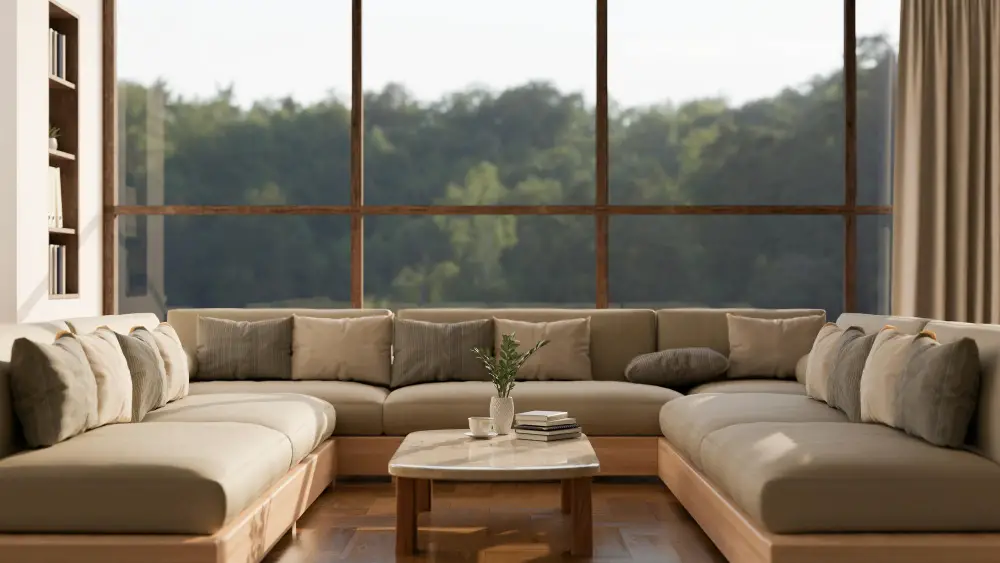
Before we dive into the process of transforming your sectional sofa into two separate couches, let’s start with some sectional sofa basics. A sectional is a type of seating that typically consists of multiple pieces that can be arranged in various configurations to fit different spaces and needs.
They come in many shapes and sizes, from L-shaped to U-shaped or even curved designs.
When it comes to choosing a sectional for your home, consider factors such as the size and shape of your room, how you plan on using the space (for lounging or entertaining), and what style best suits your decor preferences. Sectionals are available in a range of materials including leather, fabric upholstery or microfiber.
Assess Your Space
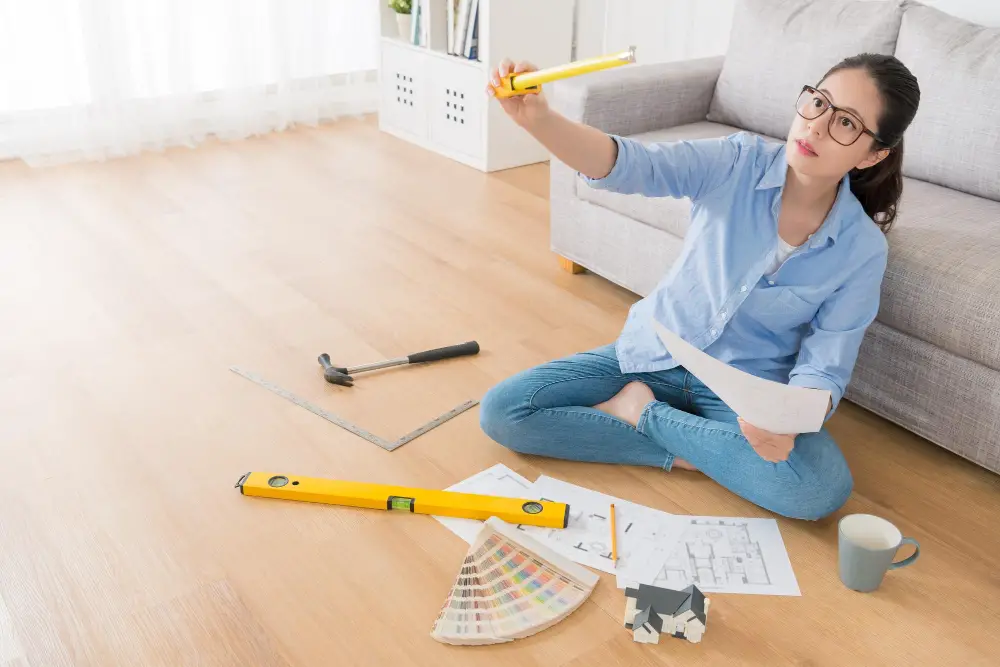
Take a good look at the room and consider factors such as the size of the area, its shape, and any existing furniture or decor that may impact how you configure your new couches. You’ll want to ensure that there is enough space for both pieces without overcrowding or making it difficult to move around.
Measurements are key when assessing your space. Measure not only the length and width of where you plan on placing each couch but also take note of any doorways or hallways they will need to pass through during installation.
Another factor in assessing your space is determining what type of configuration will work best for both functionality and aesthetics. Will one long straight sofa be better suited than two smaller L-shaped ones? Or maybe an angled arrangement would work better?
Determine Couch Configuration
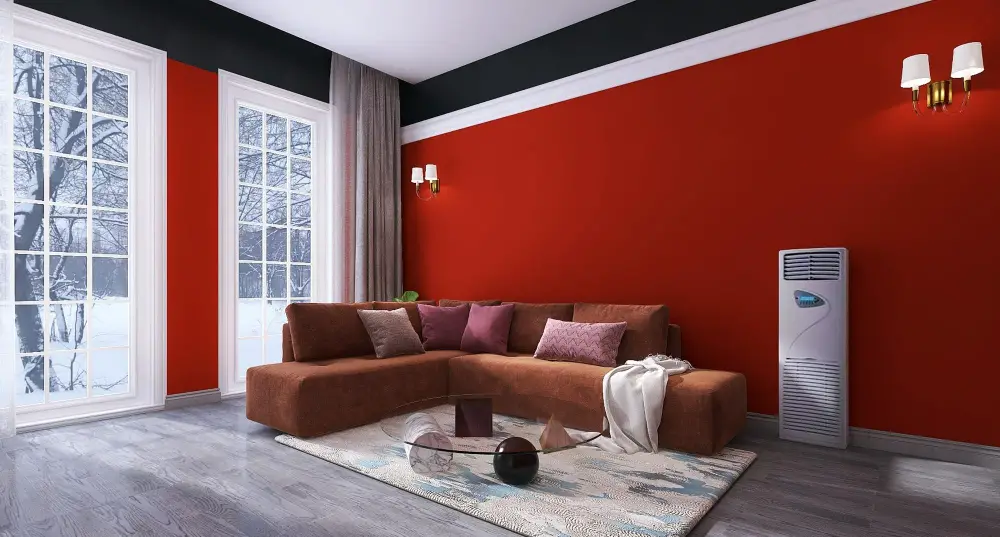
This will depend on a few factors such as the size and shape of your sectional, as well as how much space you have available in your room. One option is to simply separate the two ends of the sectional and position them facing each other for a classic “L” shaped arrangement.
Another option is to place one piece against a wall while positioning another perpendicular to it, creating an open seating area that’s perfect for entertaining guests or relaxing with family members.
If you’re feeling adventurous, consider rearranging multiple pieces into different configurations until you find one that works best for both form and function in your living space.
Choose Couch Styles
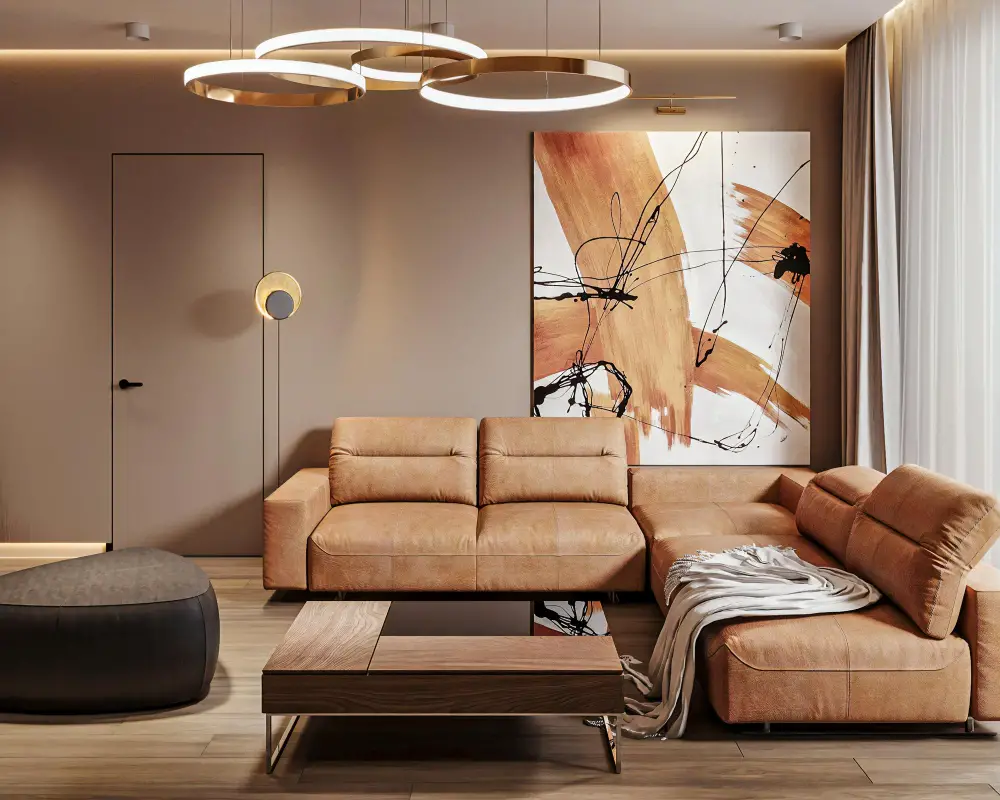
First and foremost, you want them to match your personal taste and complement the overall aesthetic of your living space. However, you also need to think about practicality – will they be comfortable for lounging or sitting upright? Will they fit in with any existing furniture pieces? Some popular styles include traditional sofas with rolled arms and tufted backs, modern sectionals with clean lines and low profiles, or mid-century inspired designs featuring tapered legs and bold colors.
Ultimately, the choice is yours – just make sure that whatever style you choose fits both your functional needs as well as your design preferences.
Gather Necessary Tools
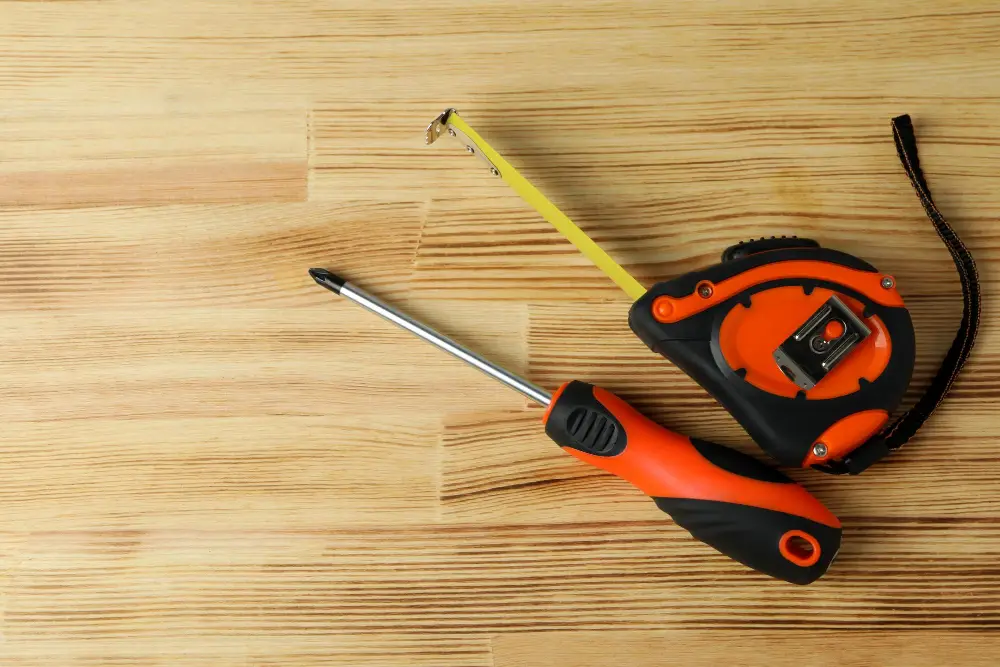
This will ensure that you have everything on hand and won’t need to make multiple trips to the hardware store. Some of the essential tools include a screwdriver, pliers, measuring tape, saw or jigsaw (depending on your sectional), staple gun with staples or upholstery tacks and hammer (if reupholstering).
You may also need additional materials such as wood glue or brackets for added support structures. Once you have gathered all these items together in one place, it’s time to move onto removing any connecting hardware from your sectional pieces so they can be separated easily without causing damage during disassembly.
Remove Connecting Hardware
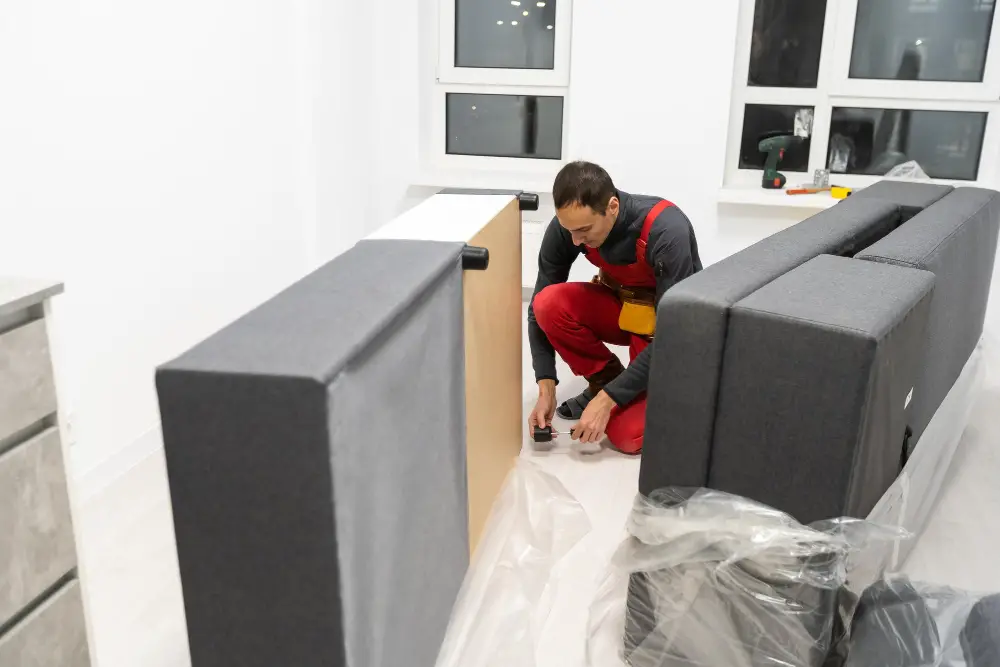
This is usually located underneath the cushions or on the sides of each section. Look for screws, bolts, or brackets that connect one piece to another and use a screwdriver or wrench to loosen them.
Be sure to keep all hardware in a safe place so you don’t lose any pieces during this process. If there are any stubborn screws that won’t budge, try using some lubricant like WD-40 and let it sit for a few minutes before trying again.
Once all of the connecting hardware has been removed from your sectional sofa, carefully lift each piece away from one another until they are completely separated.
Separate Sectional Pieces
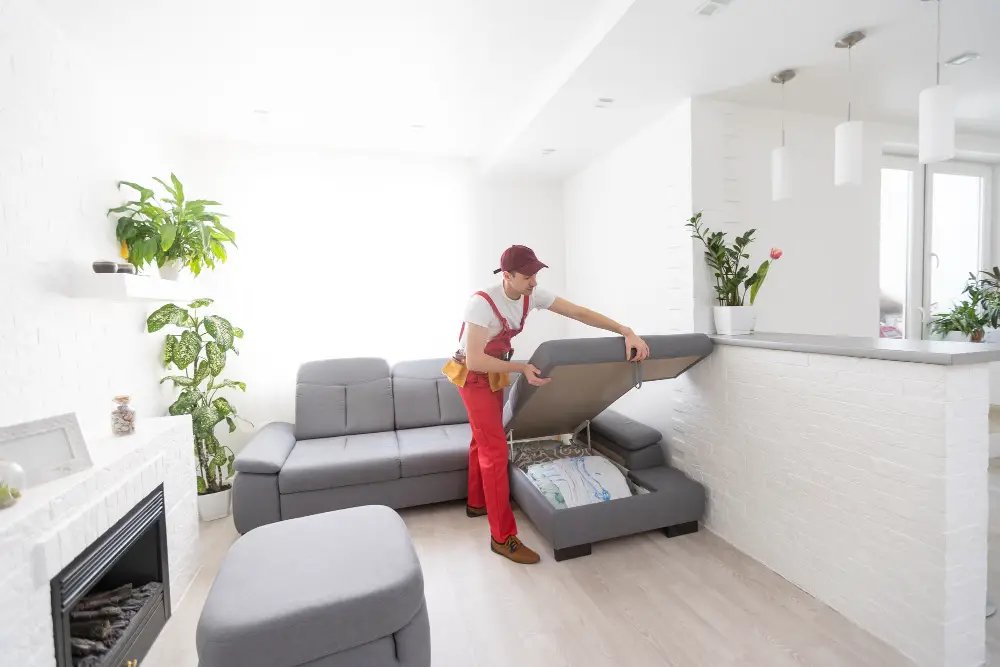
This step can be a bit tricky, but with some patience and careful maneuvering, you’ll have two separate couches in no time.
Firstly, remove any connecting hardware that holds the sectional together. This may include screws or brackets that attach one piece to another.
Be sure to keep these pieces in a safe place as they will come in handy later on.
Next, carefully separate each section from one another by lifting them up and away from each other. Depending on how tightly connected they are this might take some effort so don’t hesitate to ask for help if needed.
Once all sections are separated it is important not only reposition them correctly but also fill gaps between cushions or holes left behind after removing connectors using foam inserts or fabric patches.
Repositioning the Couches

This step requires some planning and creativity, as you’ll need to determine the best configuration for your space. Consider factors such as traffic flow, focal points in the room (such as a fireplace or TV), and any existing furniture that needs to be accommodated.
One option is to position each couch facing each other with a coffee table in between for easy conversation and entertaining guests. Another option is placing one couch against a wall while positioning the other perpendicular or at an angle for more visual interest.
Don’t be afraid of experimenting with different configurations until you find what works best for your space. Remember that this process may require some trial-and-error adjustments before achieving optimal results.
Once you have found an arrangement that suits your needs, secure any loose connections between individual pieces using screws or brackets if necessary.
Filling Gaps and Holes
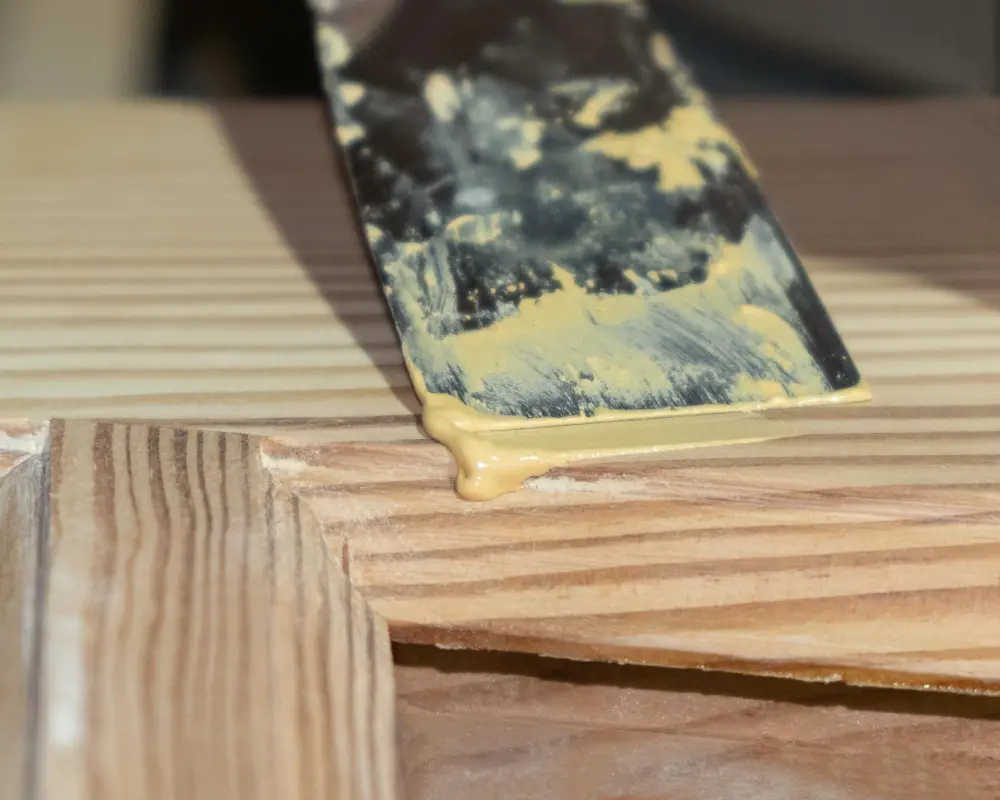
These can be unsightly and even uncomfortable if left unfilled. Luckily, filling these gaps is a simple process that can make a big difference in the overall appearance of your new couches.
To fill small gaps or holes, use wood filler or putty that matches the color of your sectional’s frame. Apply it with a putty knife and smooth it out until it’s level with the surrounding surface.
For larger gaps or holes, consider using foam backer rod before applying wood filler or putty to ensure proper support.
Allow ample time for any fillers to dry completely before sanding them down gently with fine-grit sandpaper until they’re flush with the rest of the frame surface.
Add Support Structures
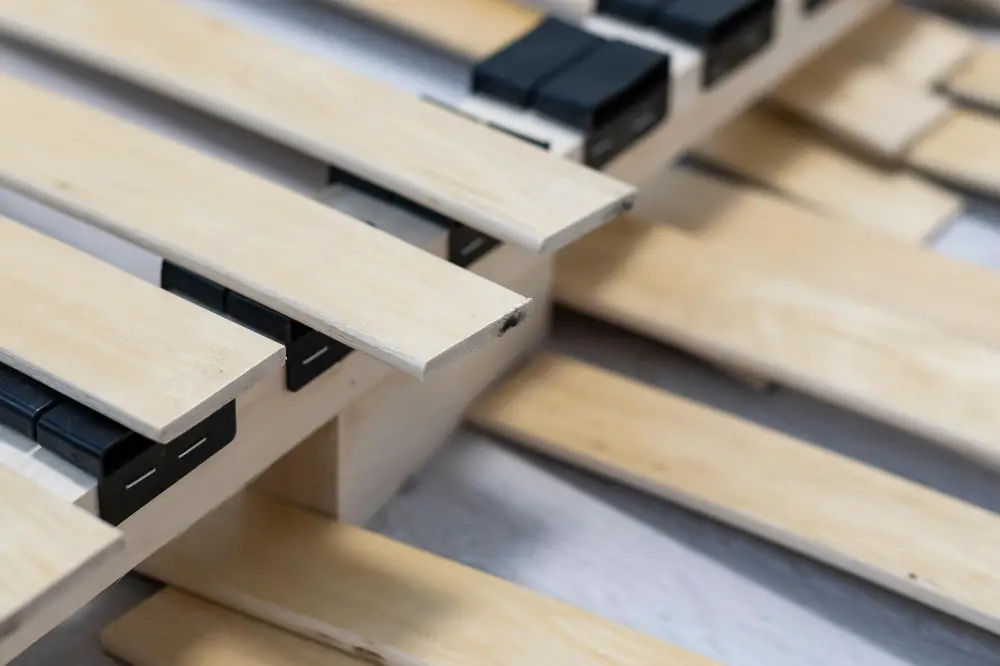
One of the easiest ways to do this is by adding wooden slats or plywood boards underneath the cushions. Simply measure the length and width of each couch seat, cut a piece of wood that fits snugly inside, then place it on top of the existing support structure.
Another option is to use metal brackets or L-shaped corner braces at key connection points between sections for added stability. These can be found at most hardware stores and are easy to install with screws.
If you’re feeling particularly handy, you could also build a custom frame using 2x4s or other sturdy lumber that fits underneath both couches for maximum support. This will require some woodworking skills but can be a great solution if your sectional was lacking in structural integrity before being split into two pieces.
Choose Appropriate Legs

The right legs can make a big difference in both the look and functionality of your new couches. When selecting legs, consider factors such as height, material, and style.
Firstly, measure the distance from the floor to where you want your couch seat to be positioned. This will help determine what leg height is best suited for each piece of furniture.
Next up is material – do you prefer metal or wood? Metal offers a sleek modern look while wooden options provide warmth and texture that can complement any decor style.
Lastly comes style – there are countless options available ranging from tapered mid-century designs to more ornate Victorian styles. Choose something that complements both your personal taste and existing decor elements in order to create an overall cohesive aesthetic throughout your space.
Attach New Legs
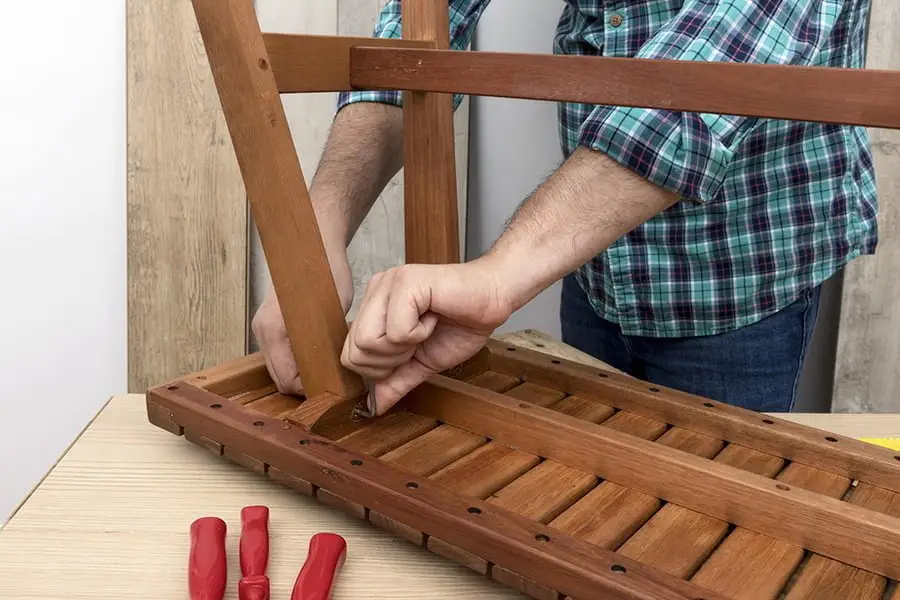
This step is crucial as the original legs were designed to support a larger piece of furniture and may not be suitable for the smaller couch configuration. When choosing new legs, consider both style and function.
Look for sturdy options that can support the weight of your couch while also complementing its design.
To attach new legs, first remove any remaining hardware from the bottom of each section using pliers or a screwdriver. Then position each leg at one corner of your newly configured couch and mark where you will need to drill holes for screws or bolts.
Next, use an electric drill with an appropriate bit size (depending on what type of leg attachment system you are using) to create pilot holes in each marked spot before attaching them securely with screws or bolts.
Upholstery Adjustments
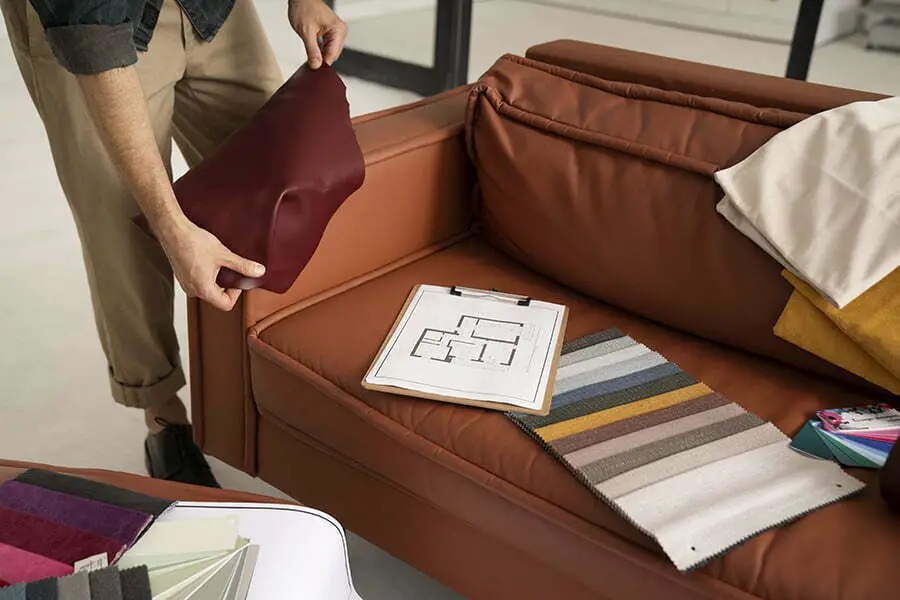
Depending on the style of your original sectional, you may need to add or remove fabric in certain areas to ensure that each new couch looks and feels balanced. For example, if one side of the sectional had a chaise lounge while the other did not, you’ll need to adjust the cushions accordingly so that both sides have an equal amount of seating space.
Another common issue is mismatched fabrics or patterns between different sections of your old sofa. To create a cohesive look for both new couches, consider reupholstering them with matching fabrics or complementary colors and textures.
If reupholstering isn’t an option for you right now but there are still noticeable differences between each piece after separating them from their original configuration – don’t worry! You can always use decorative throw pillows and blankets as accents on either side until they match perfectly over time.
Seat Cushion Solutions

Depending on how you’ve configured your new couches, you may find that some of the original seat cushions no longer fit properly or are too large for one of the new pieces. Don’t worry; there are several solutions to this problem.
One option is to have custom cushion covers made that fit each individual piece perfectly. This can be a bit pricey but will ensure a seamless and professional look.
Another solution is to purchase foam inserts in various sizes and densities and cut them down as needed with an electric knife or scissors. You can then cover these inserts with fabric or use them as-is for a more modern look.
If all else fails, consider using throw pillows strategically placed along the seats for added comfort and style.
Add In A Coffee Table
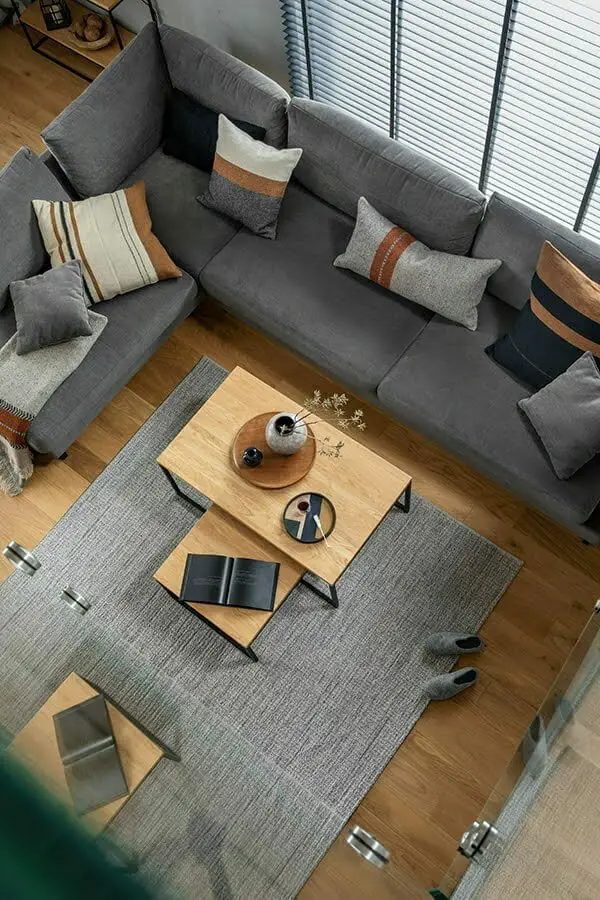
One of the most practical and stylish additions is a coffee table. Not only does it provide a convenient surface for placing drinks and snacks while entertaining guests, but it also serves as an anchor point for the room’s design.
When choosing a coffee table, consider its size in relation to your new couch configuration. If you have two smaller couches now instead of one large sectional, opt for two smaller tables that can be easily moved around or combined when needed.
In terms of style, choose something that complements the overall aesthetic of your space while also providing visual interest. A wooden or glass-topped table with unique legs can add texture and personality without overwhelming the rest of the room.
Place A Fun Rug Beneath
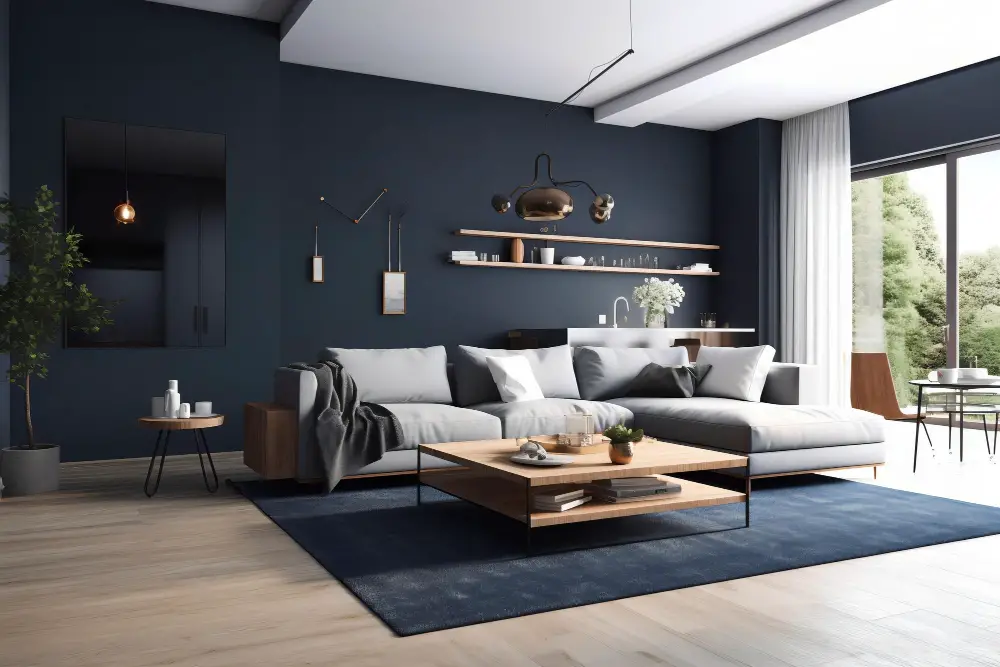
One way to do this is by placing a fun rug beneath the newly separated couches. A rug can add color and texture while also defining each seating area as its own distinct space.
When choosing a rug, consider the size of your new couches and make sure that it fits comfortably underneath both pieces without looking too small or too large. You’ll also want to choose a pattern or color that complements your existing decor while adding some personality and flair.
Don’t be afraid to mix patterns either! If you have solid-colored furniture, try incorporating a bold geometric print or playful stripes in your rug choice for added interest.
Re-Upholstering Your Sectional
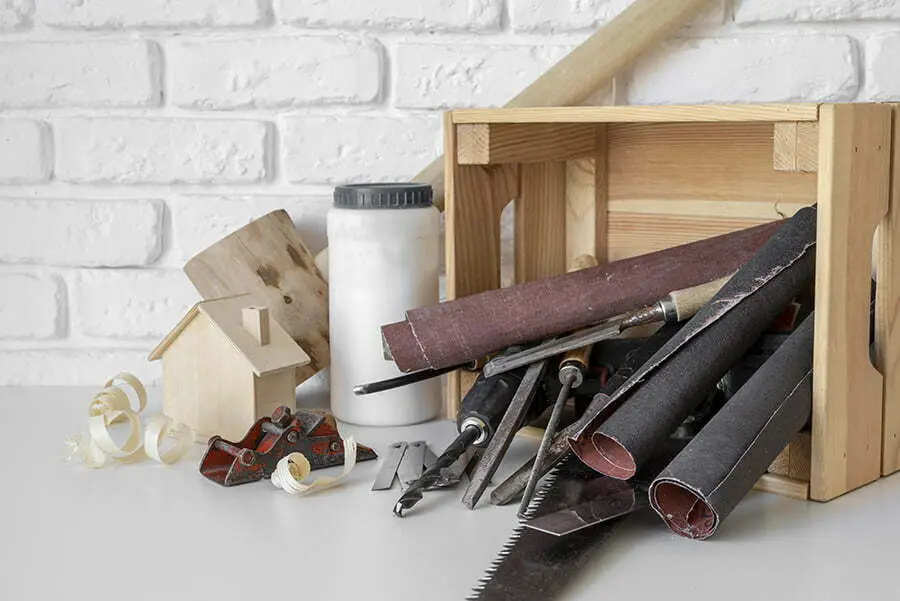
This process involves removing the old fabric and replacing it with new material that better suits your style and decor. While this may seem like a daunting task, there are plenty of online tutorials and resources available to guide you through the process step-by-step.
Before diving into re-upholstering your sectional, make sure you have all the necessary tools on hand such as scissors, staple gun, batting or foam padding for cushion filling (if needed), fabric glue or sewing machine if sewing is required. You’ll also need to choose a durable upholstery fabric that can withstand daily wear-and-tear.
Once you’ve gathered everything together start by carefully removing any existing staples or tacks holding down the old upholstery using pliers or screwdrivers. Then use these pieces as templates for cutting out new sections of material from your chosen fabric before attaching them back onto each section of sofa frame using either glue or staples depending on what works best in each area.
Unique Art Pieces
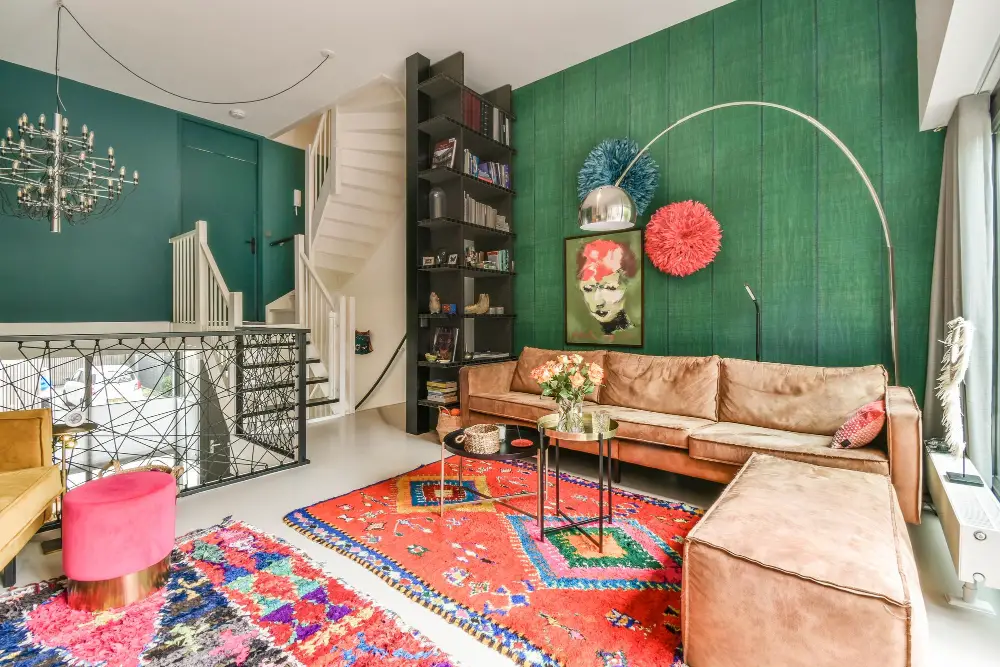
One way to do this is by incorporating unique art pieces that reflect your personal taste and interests. Whether it’s a bold abstract painting or a vintage poster, the right piece of art can tie together the entire room and make a statement.
Consider hanging one large piece above each couch for maximum impact or creating an eclectic gallery wall with smaller pieces in varying sizes and styles. Don’t be afraid to mix different mediums such as photography, prints, paintings or sculptures for added interest.
When choosing artwork for your newly separated sectional sofas keep in mind the color scheme of the room as well as any existing decor elements like throw pillows or curtains that you want to complement.
Hang A Large Mirror

One great way to do this is by hanging a large mirror on one of the walls in the room. Not only will this add an element of style and sophistication, but it can also help create the illusion of more space in smaller rooms.
When choosing a mirror for your living room, consider its size and shape carefully. A larger rectangular or oval-shaped mirror tends to work well above a sofa or console table as it helps balance out other furniture pieces in the room.
To hang your new statement piece securely, use appropriate hardware such as heavy-duty picture hangers or wall anchors that can support its weight without damaging walls.
Finishing Touches
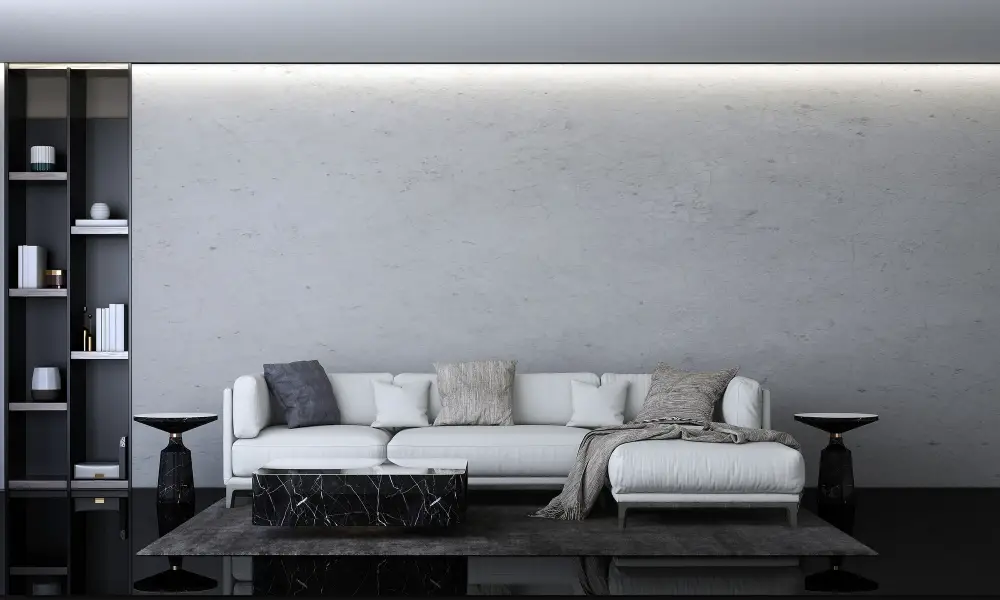
One way to tie everything together is by adding a coffee table that complements the style and color scheme of your couches. You can also place a fun rug beneath the coffee table for added texture and warmth.
Another great idea is to incorporate unique art pieces or hang a large mirror on one of the walls behind one of your newly separated couches. This will not only create an eye-catching focal point but also help reflect light around the room, making it appear brighter and more spacious.
If you’re feeling adventurous, consider re-upholstering your sectional with new fabric that better suits your personal taste or matches other decor elements in the room. And don’t forget about seat cushion solutions – adding throw pillows or cushions in coordinating colors can make all difference when it comes to comfort and style.
Remember that small details matter too! Adding decorative accents like candles, vases filled with fresh flowers or greenery can bring life into any space while creating an inviting atmosphere for guests. With these simple yet effective finishing touches in mind, you’ll have created a beautiful living space where both form meets function perfectly!
FAQ
Can I split my sectional couch?
Yes, you can split your sectional because sectional sofas are designed with separable portions that can be rearranged to fit your space.
Can you put 2 different couches together?
Yes, you can put 2 different couches together by using accessories like cushions or throws, matching colors with neutral or complementary tones, and creating an eclectic design theme.
What are some creative ways to arrange separate pieces of a sectional sofa in a living room?
Some creative ways to arrange separate pieces of a sectional sofa in a living room include forming an L-shape, U-shape, facing each other, or using them as individual seating units in different areas.
Are there any specific connectors or tools needed to securely separate a sectional couch?
A specific connector or tool needed to securely separate a sectional couch is a flathead screwdriver or a similar prying instrument.
How can I effectively mix and match different styles of couches to create a cohesive look in my living space?
To effectively mix and match different styles of couches, focus on finding complementary colors, patterns, and textures while maintaining a consistent design theme throughout the living space.





